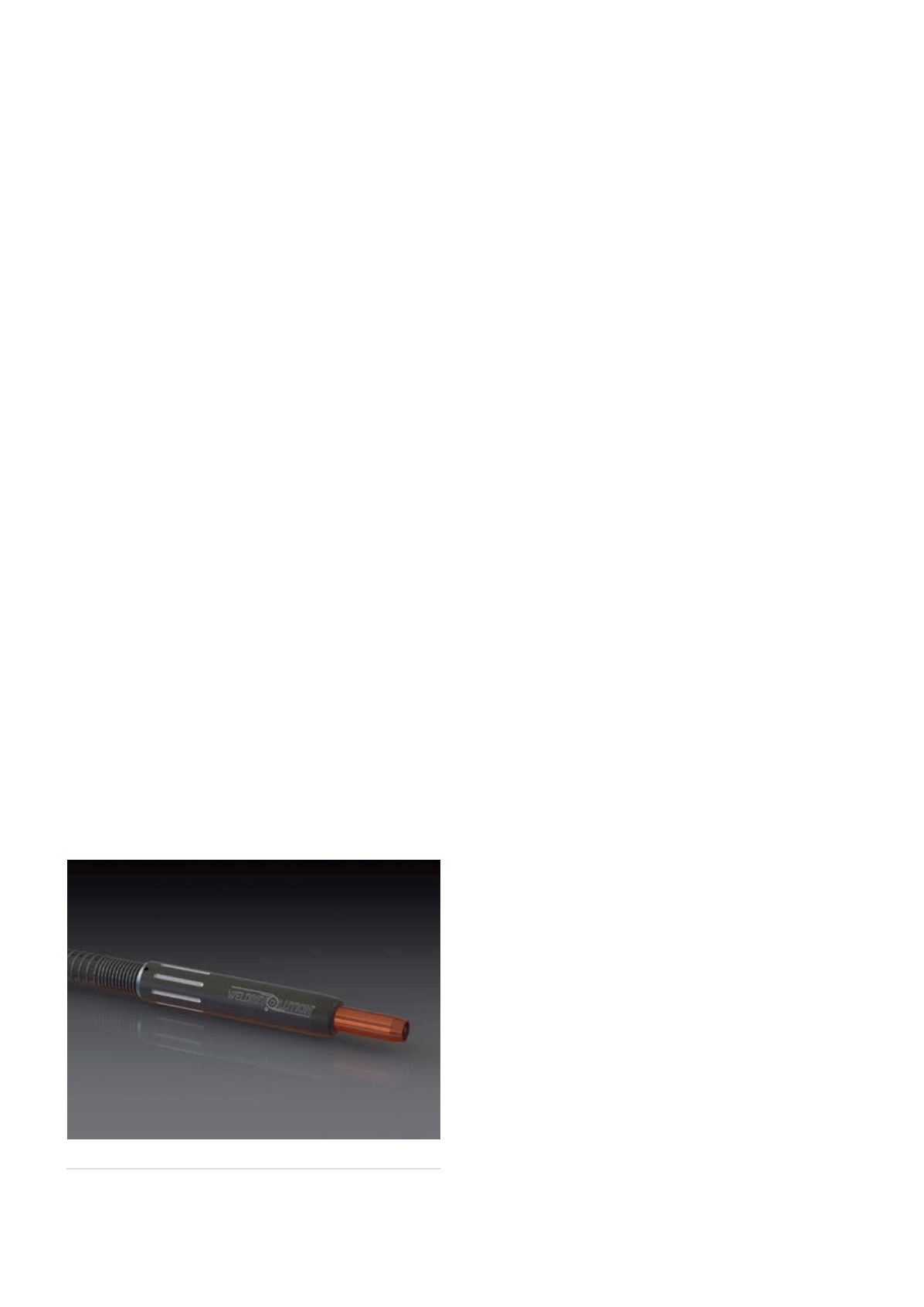
Background
State-of-the-art systems for pipe welding were originally
developed in the late 1960s. Over the past 20 years, there
have been a number of improvements in these tools.
The original research and development of rotating arc
welding dates back to the 1980s. At that time, much of the
development focused on mechanised pipeline welding.
Like other new technologies, research was limited to a few
field trials and was never commercialised. However, this
early work provided a good understanding of the science
and proved that the concept works well.
Today, a revolutionary new welding solution is
available based on this science known as rotating
arc welding, or SpinArc. Since the early days of this
technology, there have been numerous developments
related to control systems, welding power sources, wire
feeders and filler metals. These advancements now make
this process viable and affordable with significant gains in
safety, quality and productivity.
Weld Revolution LLC, based in Houston, Texas, USA, is
focused on delivering this new technology to the market.
A new technology
SpinArc
TM
welding
The process is simple and easy to understand. The wire is
fed from the wire feeder into the welding cable and torch
itself. As the wire passes through the torch, the tip of the
wire spins in a conical shape. While welding, the molten
droplets are propelled from the wire to the base metal in
a circular pattern.
Like other arc welding processes, the molten droplets
experience the same electromagnetic and gravitational
forces. With SpinArc, however, the centrifugal force
created by rotation cleanly detaches each droplet from
the wire and angularly propels it into the joint. This directs
the arc into the sidewall of the bevel, providing thorough
fusion and a consistent penetration profile into the base
metal. This effectively minimises lack of fusion, porosity
and undercut.
Set up
The SpinArc process works with both standard CV and
pulse MIG power sources. In fact, this plug-and-play
system can be added to any existing welding equipment
for an instant upgrade using either robotic, mechanised
or manual welding torch products. Prior to welding,
the welder sets three variables specific to rotating
arc: rotation speed, spin diameter and the direction of
rotation. The spin diameter is set on the torch itself, while
the other variables are dialled in on an additional small
control box included with the torch. The final and actual
spin diameter at the arc is also a function of rotational
speed, wire diameter and wire stiffness. The spin diameter
is adjustable from 0 - 8 mm, with adjustments every 1 mm.
The required spin diameter depends on the application.
For example, in a narrow and deep welding groove, a small
spin diameter may be required. As the welding progresses
from the root pass, fill passes, and finally the cap passes,
the spin diameter can be easily adjusted as needed. In
most cases, pipeline contractors have multiple welding
stations, each of which is responsible for depositing a
specific pass, or in some cases multiple passes. The spin
diameter is adjusted and remains fixed at each of the
welding stations in accordance with the qualified welding
procedure.
In other cases, such as depositing corrosion resistant
alloys, it is advantageous to increase the spin diameter. As
the wire spins, the system controls the rotational speed
through a feedback circuit to ensure that the set speed is
maintained. As with all arc-welding processes, the welding
operator also sets the typical welding parameters, such as
wire feed speed, travel speed, and voltage.
Welding processes
SpinArc is used with solid MIG wires in CV or pulse modes,
along with metal core and flux core welding wires. There
has also been some limited work done with rotating
submerged arc welding, as well as TIG welding. On the
welding procedure specification the process is essentially
a ‘controlled oscillation’. Instead of oscillation width,
stroke speed (sometimes referred to as beats per minute)
and dwell time, the spin diameter and rotation speed are
listed.
Applications
There are a number of pipe welding applications where
this tool can be applied, including pipe mills, spool bases,
lay barges, cross-country pipeline construction and in the
fabrication of ancillary piping components.
Narrow groove welds
One application where this technology works well is
in narrow groove pipe welds. These are found both in
offshore and cross-country pipeline construction projects.
Figure 2.
Rotating arc welding torch.
68
World Pipelines
/
JANUARY 2015


